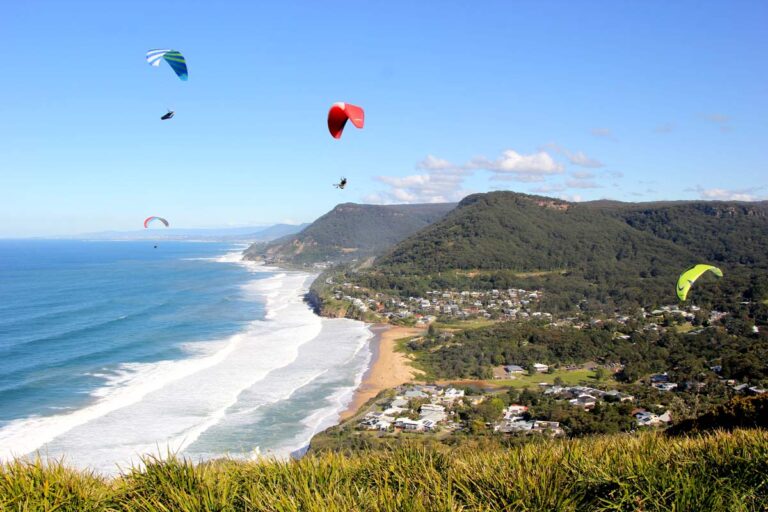
While Sydney steals the crown jewels of Australian tourism, not far to its South lies another extremely stylish, exuberantly vibrant and eclectically trendy city – Wollongong, or the ‘Gong’.
Lying just over 80 km south of Sydney, Wollongong is a jewel in its own right. Growing by the coast, sandwiched between the Illawarra escarpment and the Tasman Sea.
It is the third largest city in the state of New South Wales after senior sibling Sydney and coaling cousin Newcastle, and the tenth largest overall in the country.
In its beach-side, littoral existence, ensconced in sun, sea and sand, Wollongong is a sassy embodiment of perfect Australiana.
Its moniker remembers the original Aboriginal clans that lived here and is said to be derived from the Dharawal name ‘woolyungah’ meaning five islands – which can be spotted even today from a good vantage point.
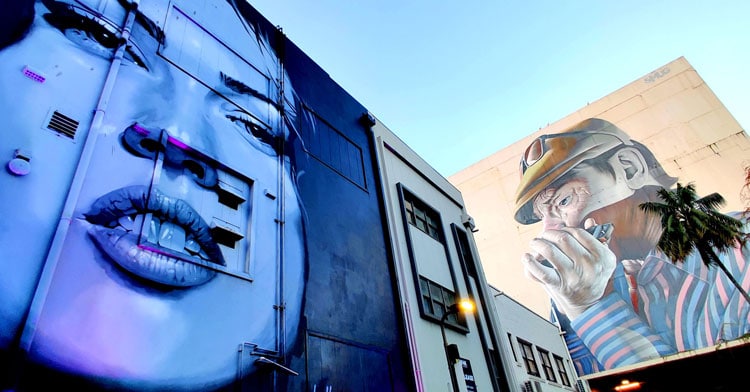
Wollongong
The first Europeans to have come to this part were famous English navigators, George Bass and Matthew Flinders (the latter being credited with giving the nation its name) who were exploring the coast from Port Jackson by the sea in 1796 – less than a decade after the establishment of the colony in 1788.
As Sydney began to grow, the region attracted cedar cutters and then graziers, while the discovery of coal in 1797 by George Bass gave early indications of economic activity that would power Wollongong’s economic heart for decades thereafter. Yet, it was not until 1942 that it was declared a city of its own.
Today, Greater Wollongong stretches all the way from Stanwell Park in the North to Shellharbour in the South. It stretches over 60km and includes an energetic university, a botanic garden larger than Sydney’s flagship garden, an Australian seaport and one of Australia’s largest industrial complexes in Port Kembla.
With its long sandy beaches interspersed with quaint suburbs, brilliant hiking and cycling trails, reserves and gardens, Wollongong is a beautiful city with stylish suburbs. There are lots to keep one busy for days if not weeks, irrespective of age.
Nonetheless here are some of Wollongong’s top draws:
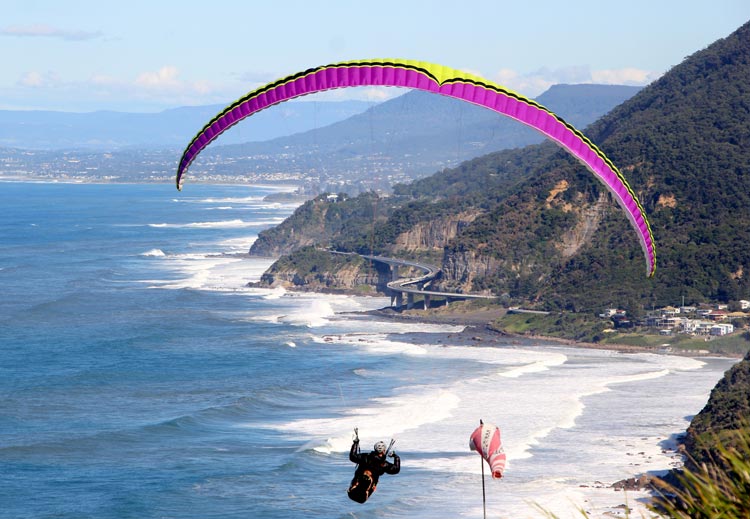
Bald Hill Lookout, Stanwell Tops
Despite its severely unromantic name, Bald Hill is perhaps the most picturesque of many lookouts scattered across Wollongong. Overlooking the indigo waters of the Tasman Sea, the lookout peers below at the township of Stanwell Tops and an eponymous beach that has seen a lot of aviation history.
It was here on these hills and on the beach that legendary Australian engineer and aviator, Lawrence Hargrave perfected his box-kites and aviation theories that would, later on, inspire the Wright Brothers to invent the aeroplane.
The driveway to the lookout, named after Lawrence, and a plaque at Bald Hill pay obeisance to this pioneer, who never patented his works so that they could be used by other scientists around the world to further innovation.
Best Tips & Tools to Plan Your Trip
Interestingly, Bald Hill today is a hub for hang-gliders and paragliders and a visit on a weekend will guarantee the sight of colourful gliders floating like tinsel almost meditatively against bright skies and blue seas.
Come winter, the lookout becomes an excellent vantage point to seek Humpback whales as well, that travel through these waters to the north in the calving season.
Also visible is Wollongong’s contribution to the world of bridges – the Seacliff Bridge, an engineering marvel along the Grand Pacific Drive that snakes and swerves along the steep cliffs, leading to Wollongong City.
If you like hiking, you can walk across the Seacliff Bridge and soak in the amazing sea breeze. Alternately, not far from the Bald Hill lookout is the Otford lookout, from where commences an amazing but long walk in the Royal National Park to the Figure 8 pools – tidal rockpools that look like, guess what, the number 8!
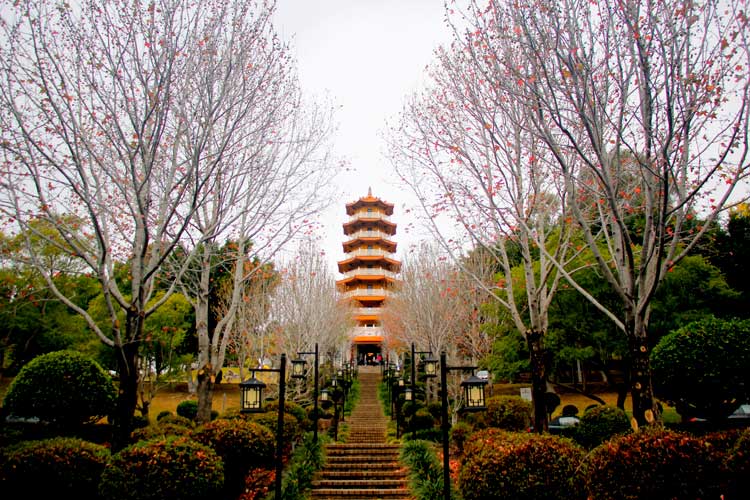
The Nan Tien Temple
Irrespective of caste, creed, cult or culture, the Nan Tien temple should be on your must-see list if you land in Wollongong or even Sydney.
Built by a Taiwanese Buddhist order in 1995, it is one of the largest Buddhist temples in the southern hemisphere and looks gigantic and impressive with its saffron-coloured sprawling roofs and an eight-storied pagoda that is visible from far as you drive on the hilly ridges entering Wollongong.
The Nan Tien temple oozes in peacefulness as you absorb the calmness of the temple precincts, while simultaneously feeling belittled in its huge courtyards.
Indulge in a bit of shnirin-yoku or nature-walking in the Japanese gardens, chuckle at the many children statues scattered all over the complex, push a heavy, wooden gong on the top of a scenic hill to resonate in its monastic timbre, or participate in tai-chi, meditation or calligraphy lessons to cleanse your soul and mind.
If anything, you can sit peacefully and look at the many Buddha Statues enshrined in the temple to ponder on your Ikigai.
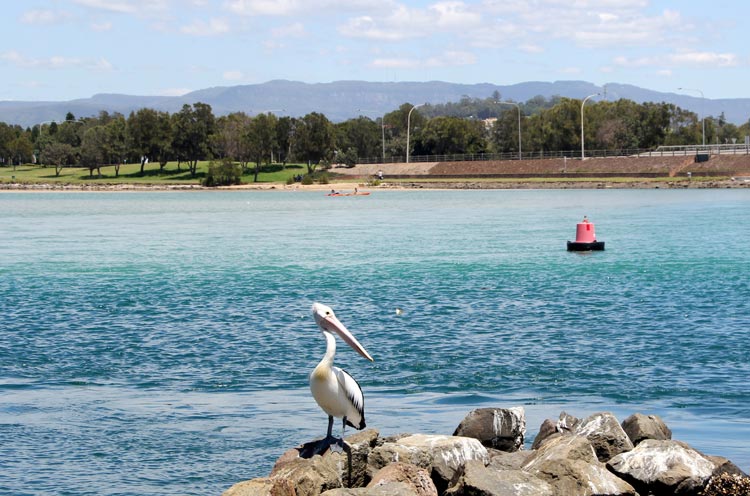
Lake Illawarra in Wollongong
Once named Tom Thumb’s lagoon by Australian circum-navigator Matthew Flinders, Lake Illawarra today thankfully remembers the name given by the local Tharawal and Wadi Wadi people instead of a fairy tale character, after whom Flinders had named his own boat that had anchored in this lagoon in 1797.
As a large natural body of water, it was a source of spirituality, besides food, to these local aboriginal people, of whom, many burial sites and middens have been discovered all around the lake.
The lake, or rather lagoon, buzzes with water sports and activities, particularly in summer, and you can indulge in some easy paddleboarding or kayaking on its calm waters.
Alternately, one can walk or cycle on the Illawarra art trail by the lagoon that showcases local works that recollect the Aboriginal history and local flora and fauna of the region.
The entrance of the lagoon from the sea, at Windang, looks beautiful in the interplay of sea and silt, with easy accommodation available overlooking the waters.
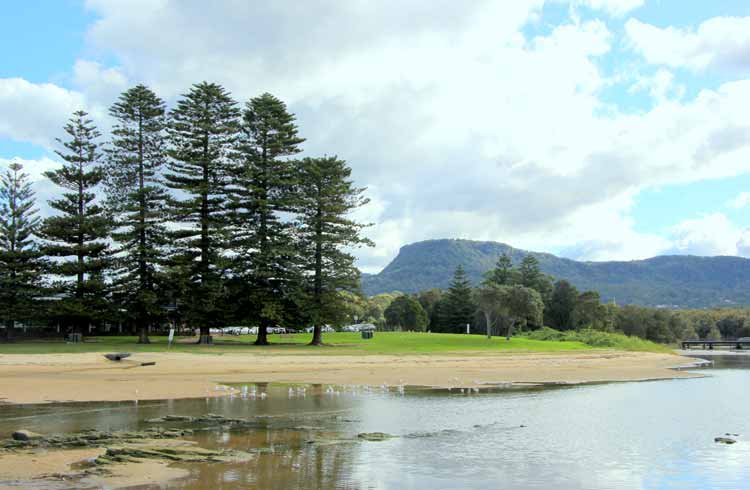
Mt. Keira Lookout
Yet another scenic lookout on the Illawarra escarpment looming over the Wollongong region is the Mt. Keira lookout. The hill casts its sentinel shadows over Wollongong and is distinctly visible from most parts of the city.
The Mt. Keira lookout provides gorgeous panoramic views and one can easily trace the most popular travel destinations of Wollongong including its many beaches, the resplendent Nan Tien temple, lake Illawarra, the bustling Port Kembla region, as well as the sparkling white lighthouses of Wollongong city.
The lookout is part of the Botanical Gardens sitting directly underneath its shadow and has a 5.5km walking track through eucalyptus forests that starts and ends at the lookout.
Contrary to expectations – and in line with Wollongong’s naming traditions – Keira is apparently an Aboriginal term meaning lagoon (the Illawarra Lake) or high mountain, or even a rendition of Geera, daughter of the West wind, who turned to stone in her isolation, while her five other sisters were thrown into the sea by the West Wind for misbehaving, which eventually gave Wollongong its name.
Mt. Keira was once a large coal-mining centre, its high-grade coal being much sought after in Asia. Coal was despatched downhill to the Wollongong wharf by horse carts initially and then via trams – the extant tramlines of which have been preserved even today on the city’s waterfront.
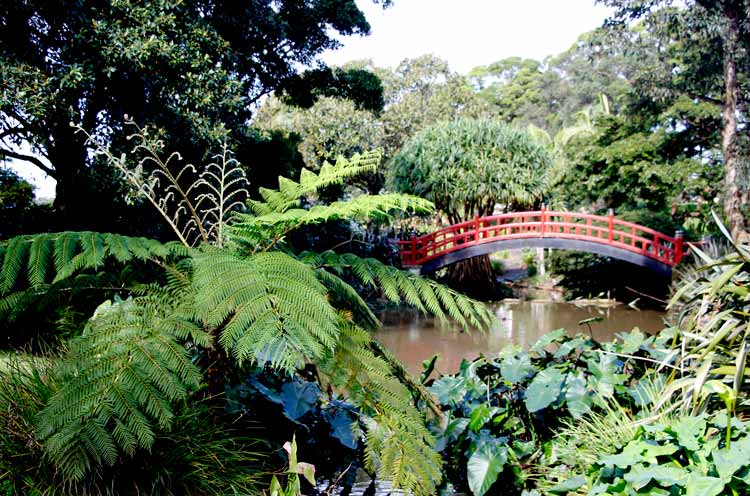
Wollongong Botanic Gardens
The Botanic Gardens at Wollongong is situated underneath Mt. Keira in the aptly named suburb of Keiraville.
It includes beautiful walks through gardens of roses, azaleas and a large swathe of succulents, besides housing subtropical and dry rainforests, complete with a creek draining onto a large lake.
Of special mention is a Japanese barrel bridge that commemorates the connection of Wollongong with sister city Kawasaki, besides a poetic rotunda near the rose garden with brilliant verses on its octagonal roof that reinforces the sublime beauty of nature.
The Garden also includes the Mount Keira summit and Puckey’s reserve – the latter includes a long winding boardwalk through coastal sand dunes and enigmatic wetlands, terminating at the North Wollongong Beach near a lagoon.
If you have still not satiated your faunal thirst for beauty and knowledge, you can head over to the Illawarra Rhododendron Gardens near Mt. Pleasant, which overflows in springtime in blooms of rhododendrons, azaleas, magnolias and camellias besides housing a pool of waterlilies that will make you scribble the perfect haikus of a sunny afternoon.
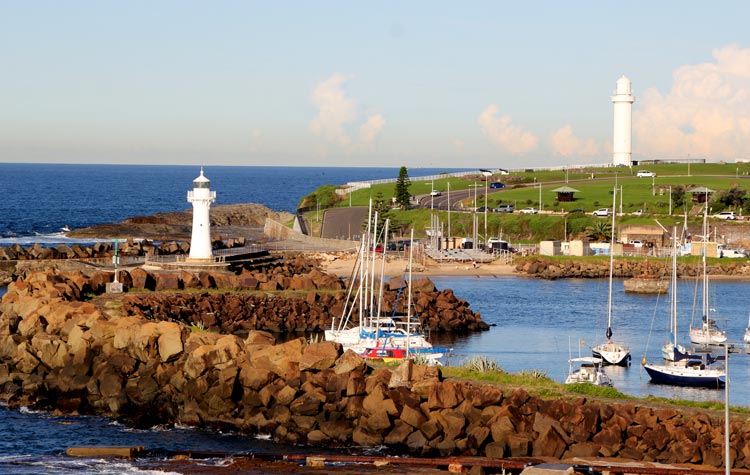
Flagstaff Hill and Lighthouse
As Ted says in How I met your mother, a person gets a certain allotment of lighthouses per lifetime. Well, not for those living in Wollongong for the city boasts not one, but two beautiful lighthouses within close proximity to each other (and is the only place in eastern Australia to hold the record).
The older one, the Wollongong Breakwater Lighthouse, or the Old Lighthouse dates back from 1871 to guide increased shipping activity from coal-mining operations.
Its importance diminished though when a newer one – the Wollongong Head Lighthouse was built in 1937. The older one was deactivated in 1974 and was on the verge of demolition until locals came together and luckily saved this piece of heritage.
Though decommissioned, the Breakwater Lighthouse is fully functional today and lights up the dark skies on special occasions while being protected as a local heritage building.
The Wollongong Head Lighthouse stands majestically atop Flagstaff hill, and is listed today as a local government heritage building for its history besides being the country’s first fully automatic electric lighthouse.
The walk to the lighthouse through verdant green slopes is as picturesque as it is panoramic. You can spot the full length of the Wollongong City Beach, replete with surfers and swimmers, the bellowing chimneys of the industrial heart of Port Kembla in the background besides the five islands strewn near the shore.
As you walk around the summit of Flagstaff Hill, you get amazing 360-degree views of the city on one side and the sea on the other.
Look out for the Vietnam War Memorial along with three canons near the base of the lighthouse, installed way back in 1879 to repel attacks from the Russian Navy, similar to canons established on strategic vantage points along the Sydney Harbour.
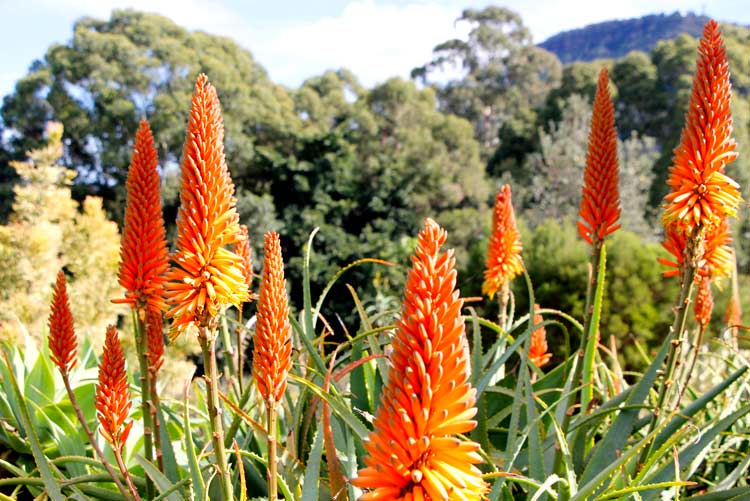
Travel to Wollongong
As with any other thriving University township, Wollongong seems to have an ever-flowing stream of youthful energy, which is most evident in spots such as Flagstaff Hill or the City Centre.
It is a destination for all ages and is heavily packaged with an above-average quota of lookouts, hills, reserves, beaches and gardens. The city centre is packed with vibrant street art and strewn with cosmopolitan cuisines that can rival any world class city.
The Jamberoo Action Park to the south and the Science Space centre to the north will enthral children while automobile aficionados can spend hours at the Australian Motor-life Museum or the HARS Aviation Museum.
Then there are National Parks that wrap Wollongong from North to South and are full of bushland trails and beaches. Even if you do nothing, Wollongong has a lot to offer in its string of beaches and classy cafes overlooking the Pacific.
So the next time you are in Sydney, take the Grand Pacific Drive to head over to the Gong – it will prove through a hundred reasons and more, that the younger sibling has indeed come of age as an inspiring destination that stands on its own, with its share of history, nature, gastronomy and more.
Author Bio: Ayan A. Read more about Sydney and my travels at www.vagabonds-trail.com

